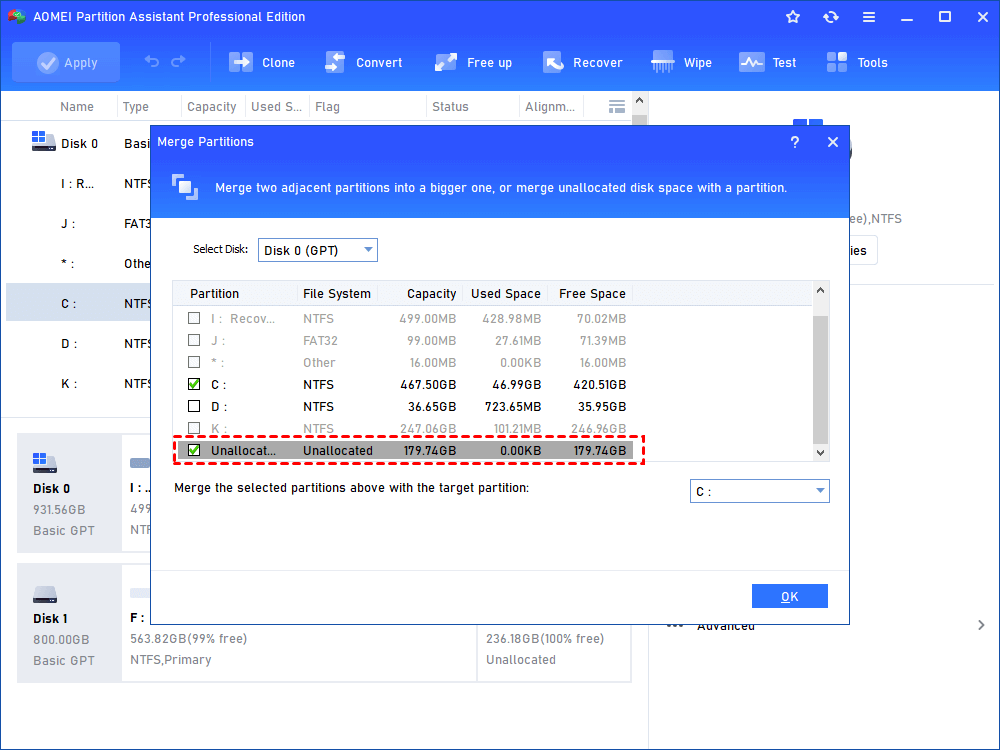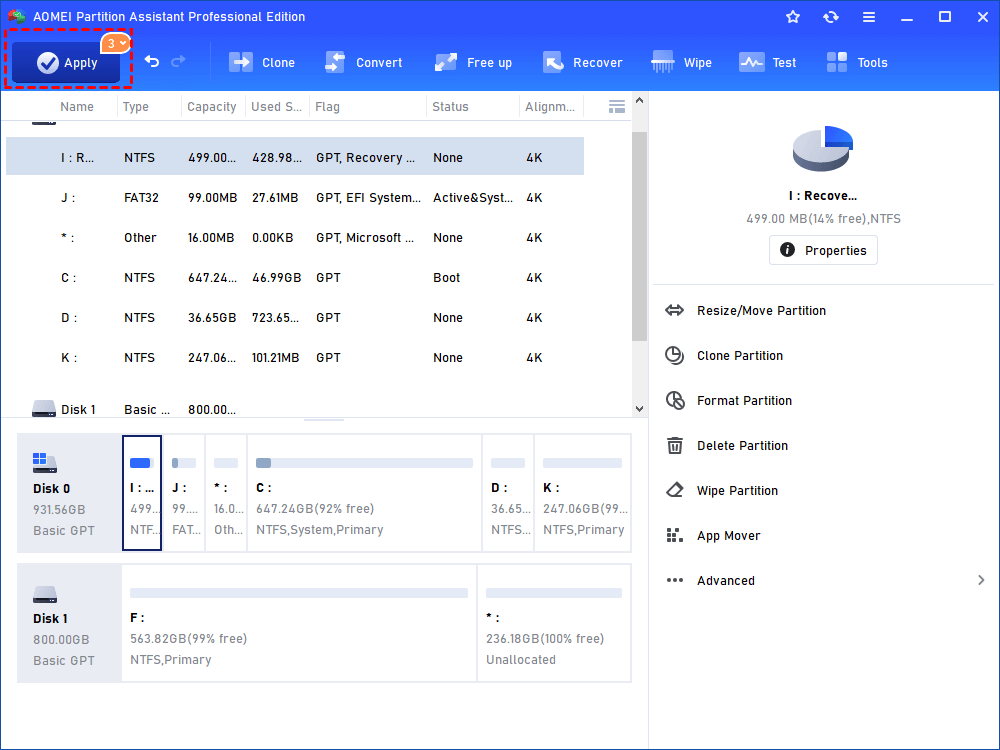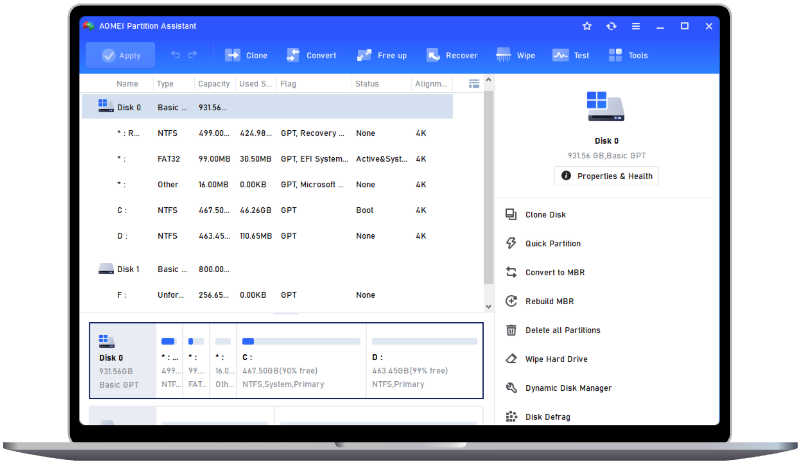How Do I Fix Unallocated Drive Space [4 Ways]
If you can't access your drive and it appears as Unallocated in Disk Management, this post will help you understand what unallocated space is and how do I fix unallocated drive space to make it usable.
What does unallocated drive space mean?
An unallocated hard drive is a storage device that Windows fails to detect or utilize due to the absence of a recognizable file system. Without this structure, the drive remains inaccessible, much like a library where every book has lost its cover and index—while the information exists, there's no way to locate or organize it.
Several factors can lead to a hard drive becoming unallocated:
• User mistakes: Misuse of disk partitioning tools, often by inexperienced or careless users, can result in an unallocated drive or partition.
• Logical corruption: Power failures, improper system shutdowns, or interruptions during crucial disk operations can corrupt the file system or partition table, rendering the drive unallocated.
• Malware attacks: Certain malicious software, such as Petya, specifically targets the partition table or Master Boot Record (MBR). When these critical structures are damaged, Windows loses its ability to recognize the drive’s layout.
Fortunately, an unallocated drive typically retains its data despite losing its organizational framework. This means recovery is possible before attempting to repair the drive itself.
How do I fix unallocated drive space?
If your unallocated hard drive contains important files, facing potential data loss can be overwhelming. With the drive inaccessible, retrieving those files may seem impossible.
However, if you previously backed up your critical data or the entire drive, there's no need to worry. If not, immediate action is essential—recovering data from the unallocated drive as soon as possible minimizes the risk of overwriting, which could lead to permanent loss.
Once you have successfully recovered all important data, the next step is to repair the unallocated hard drive, restoring it to a usable state.
Way 1. Update or install disk driver
Keeping your hardware updated with the latest firmware is essential for maintaining system stability. Outdated disk drivers can cause partitions to become invisible or lead to incorrect hard drive capacity readings in Windows. Updating the disk driver can help restore access to the partition.
Step 1. Get to Device Manager by clicking on "Start" and type in "devmgmt.msc" or by going to Control Panel and clicking on "Device Manager".
Step 2. Right-click on the target disk under Disk drive, click on "Properties", then the Driver tab and then click "Update Driver".
Way 2. Check and fix hard disk error
File system errors can also cause a hard drive to appear as unallocated. Running the chkdsk command in Command Prompt can scan and repair logical issues.
Follow these steps to check and fix disk errors using chkdsk:
Step 1. Type cmd in the Windows search bar, then right-click Command Prompt and select Run as administrator.
Step 2. In the command window, type the following command and press Enter:
chkdsk g: /f /r /x
● g: refers to the drive letter of the drive that you need to check
● /f fixes the errors found in the F partition/volume.
● /r locates the bad sectors on the drive and recovers readable data. But some data cannot be recovered with /r. So it is important to develop a habit of making schedule backups.
● /x forces the drive to dismount before the process starts.
Step 3. Wait for the scanning and repair process to complete.
Step 4. Restart your Windows 10 computer and check if the hard drive is accessible.
If you're not comfortable using complex commands or worry about potential errors—such as the computer failing to boot after a hard drive check—consider using a third-party tool for a safer and more straightforward solution.
AOMEI Partition Assistant is a highly recommended option. Compatible with Windows 11, 10, 8, and 7, it features a user-friendly interface that makes disk management easy for both beginners and advanced users.
To check and repair hard disk errors using AOMEI Partition Assistant, follow these steps:
Step 1. Download the software. Install and launch it. Right-click the drive partition you need to check, and select Check Partition under Advanced.
Step 2. Choose check partition and fix the error in this partition by using chkdsk.exe or the other two options based on your needs. Then click on OK, and wait until completed.
Bonus tip: you can also right-click the disk which shows as unallocated space, and choose Surface Test to check whether there is bad sectors on the hard drive.
Way 3. Create a new partition using the unallocated space
Whether dealing with a brand-new hard drive or an existing one that has become unallocated, you can create a new volume and allocate space to restore functionality. Once completed, Windows will recognize the drive and allow data storage.
Follow these steps to create a new volume on an unallocated hard drive:
Step 1. Press Windows + R, type diskmgmt.msc, and press Enter to open Disk Management.
Step 2. If setting up a new hard drive, follow the on-screen prompts to initialize it.
Step 3. Right-click the unallocated drive and select New Simple Volume.
Step 4. Click Next, then specify the volume size.
Step 5. Click Next to assign a drive letter. Choose a letter that isn’t already in use to prevent conflicts.
Step 6. Click Next again to format the partition. Set the file system, allocation unit size, and volume label as needed.
Step 7. Once the process is complete, the hard drive should be accessible and ready for use.
Way 4. Add unallocated space to an existing partition
If a portion of your hard drive appears as unallocated space and you no longer need the data that was stored there, you can merge it with an existing partition to make the space usable again.
Follow these steps to extend a partition using Windows Disk Management:
Step 1. Right-click the Start button and select Disk Management.
Step 2. Locate the partition you want to expand, then right-click it and choose Extend Volume.
Step 3. When the Extend Volume Wizard opens, click Next.
Step 4. On the Select Disks screen, the unallocated space should already be selected. Click Next to proceed.
Step 5. Click Finish to complete the process.
Step 6. Once done, the unallocated space will be merged with the existing partition, increasing its capacity.
However, if the unallocated space is not located right behind the to-be-extended partition, you will encounter Extend Volume grayed out issue. To avoid such an obstacle, AOMEI Partition Assistant is a good choice. It can help combine unallocated space with existing partition without no effort no matter whether the unallocated space is or not continuous.
Step1. Install and launch AOMEI Partition Assistant, you will see the main environment of your hard drive. Right-click the C drive at the main interface, then select "Advanced" > "Merge Partitions" at the pop-out menu.
Step2. Then, it will move to the window where you can assign unallocated space to C drive by selecting the partitions in the box. Click "OK".
Step3. Here you can see that you have already extended the C partition by adding the unallocated space to the C drive. Don’t forget to click "Apply" to submit the whole operations.
Conclusion
That’s all about how do I fix unallocated drive space. By using these available methods, you can successfully repair an unallocated hard disk on Windows 11, 10, 8, or 7. So, there’s no need to feel overwhelmed when facing such issues.
Beyond fixing unallocated disk errors, AOMEI Partition Assistant offers solutions for various hard drive problems, such as unallocated partition cannot extend, non-system disk errors, and more.
For enterprise users, the Server Edition provides an extensive set of features for efficient disk and partition management on Windows Server 2008 (R2), 2012 (R2), 2016, 2019, 2022, and 2025.





